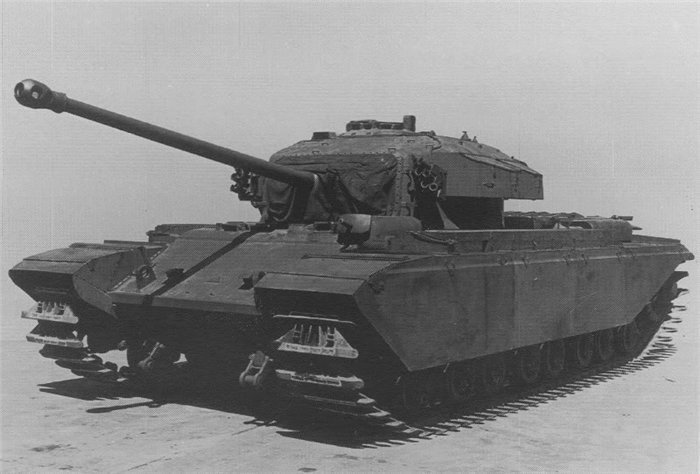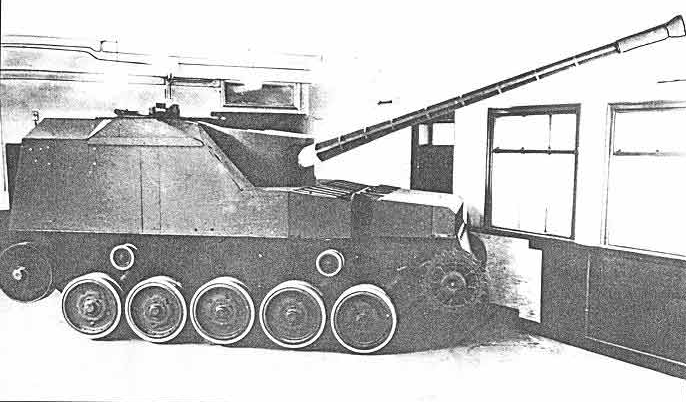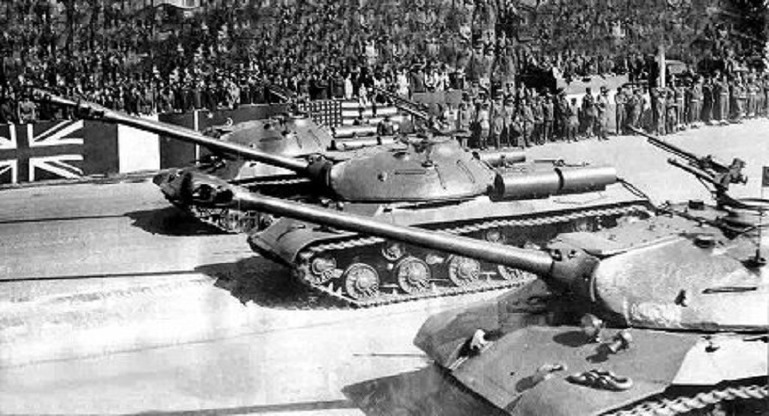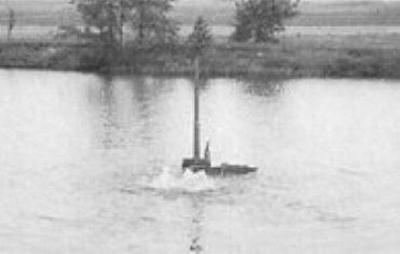
After the war, the US heavy tank program was in full swing. However, there was still some debate as to just what the heavy tanks would look like, or even what it is they were going to do. As a result, though it was accepted that the T28 and T29 series tanks were dead ends, they still provided some kernels for thought on the matter. Armored Board decided to put a more detailed writing down as to where the heavy tank program should go, if at all. Specifically, “to secure sufficient information on the employment of heavy tanks to form an intelligent basis on which future requirements for heavy tanks in the US Army may be determined.” The report was dated 30th June 1948.
This is a fairly long report, so I’m going to split it up into two parts. One the more philosophical outlook as to just what heavy tanks were supposed to be doing and the second, next week, will be on the practical matters relating to tanks of the T29 class in particular. Extract follows:
Background:
By current definition the term Heavy Tank includes those from 56 to 85 tons. The United States first developed a tank (Heavy Tank, M6) in this weight class in 1942; however, it failed to meet service requirements and was not produced. The German Mark VI (Tiger) appeared in 1943 followed by the Mark V (Panther) and a heavier more powerfully armed version of the Mark VI (The Royal Tiger). The Russian 50-ton KV, new in 1941, was succeeded by the Josef Stalin series in 1944. The Josef Stalin -3, a vastly improved fighting vehicle of the heavy tank class, weighs approximately 60 tons, is armed with a 122mm gun and as early as the summer of 1945 had been produced in considerable numbers.

Development of Heavy Tanks T29 and T30 was initiated in late 1944 in an effort to provide a tank possessing greater fire power and better armor protection than Medium Tank M26, yet equal to or superior to that vehicle in performance. It was visualized that one or both of these tanks would be required for use against fortified positions and heavily armored enemy combat vehicles. Neither of these two vehicles was available for use in World War II. One model of the heavy tank series contemplated at the time of initiation of the T29 and T30 development was the Heavy Tank, T34 with 120mm gun T53. This tank has not yet been produced. Also in this weight class and in the pilot stage are the British FV201 at approximately 64 tons, and the US Heavy Tank T32, a more heavily armored and gunned vehicle of the M26 type weighing approximately 60 tons.
Historical Analysis
1) During the early stages of the war with Russia, the Germans found that their PzKwIII and IV tanks were no match for the Soviet KV I and KV II tanks which were both more thickly armored and carried heavier guns than the German tanks. The Germans were forced to step up development and production of their own PzKw V and VI tanks and modify their existing models to include more powerful antitank guns, improved armor and engines. This increase in the weight of armor was accompanied by a corresponsing decrease in speed and resulted in change of tank tactics such as
a) Imposing a limit to the distance between objectives.
b) Increasing co-operation between tanks and infantry, and assault guns and infantry.
c) Increasing use of the assault gun in the support role in the place of the tank.
2) Both the Germans and the Russians employed heavy tanks (Over 56 tons) in World War II. The core of the Soviet armor was the medium tank which was the main shock weapon, with all other armor designed to support and protect the medium tank, or to eliminate enemy resustance shattered and disorganized by the assult of the medium tanks. The heavy tanks supported the mediums by fire. With greater fire power and range, the heavies lay back and engaged the more difficult targets. In dealing with well fortified positions, it was the practice of Russian medium tanks to proceed some 440-550 yards in advance of the heavies. Mediums advanced in force and compelled the enemy to disclose his anti-tank positions by offering a challenge more direct than could be provided by a reconnaissance in force. Occupying previously reconnoitered cover positions, the Russian heavy tanks then used their superior range and weight of shell to eliminate the enemy’s anti-tank defenses. Their armor, combined with their selected positions and greater ranges furnished relative invulnerability.
3) The history of World War II indicates that the use of heavy tanks not only was feasible but considered necessary by both the Germans and the Russians.
4) It is also apparent that the British consider the heavy tank feasible. They have plans for the employment of a universal tank with a limit of not to exceed 70 tons. Their universal tank now under development is in the heavy tank class but does not approach the 70 ton limit set by General Staff policy. The British are also pushing their bridge program to obtain Class 70 bridges in the division thereby keeping up with or even outstripping the trend in tank development.
5) The United States did not employ heavy tanks in World War II. (The M26 although originally developed and called a heavy tank is in the medium tank weight class). Consideration was given to the use of heavy tanks, but the decision was made in favour of the medium tank for several reasons, some of which were:
a) tactical mobility of the medium tank as opposed to the heavy tank.
b) Production capability
c) Shipping: More medium tanks could be shipped overseas than could heavy tanks.
6) To compete with the more heavily armored and armored German tanks, the US found it necessary to employ the tank destroyer armed with a 90mm gun. Towards the end of the war, the M26 tank also armed with the 90mm gun was introduced.
7) It is now established policy in the US Army that the tank destroyer can be eliminated and its mission performed by a tank.
Policy:
1) British:
The British state that “ceaseless research and development must continue in order to produce for the next war a British tank which not merely incorporates the lessons learned from the last war, but which has been evolved by an intelligent anticipation of the conditions and characteristics of future warfare. Although the General Staff Policy at the present is for a universal tank which must of necessity be restricted from time to time by certain limitations of size and weight, this must not be allowed to check experiment and research on heavy tanks which exceed these limitations”

a) Mobility. “Cross country mobility of a very high order is a primary requirement of the future tank”
b) Armament. “The General Staff require a tank to fire a projectile which will defeat at any reasonable range the thickest armor which can be mounted on any enemy vehicles. This is considered to be approximately 350mm. This projectile must be fired with a standard of accuracy comparable to that of present high velocity A/TK weapons. In spite of the fact that this appears unobtainable at present, it must remain as the standard which is required and which must be aimed at. Until such time as this standard is obtained, we must be confined to an orthodox weapon, the maximum size of which is about that of the 20pr in tanks and must rely on the orthodox gun of greater caliber which can be mounted on SP anti tank gun chassis to defeat the heaviest armor which the enemy can put in the field”
c) Armour: “The tank must obviously have all over immunity to small arms fire and to the point blank explosion of HE projectiles of caliber up to 150mm fitted with direct action impact fuzes. Beyond this as much armor as is possible must be put on without prejudicing the all-important cross-country performance and general performance of the vehicle”
d) Fire Control. “The tank must no longer be limited by the capabilities of the human eye for the engagement of targets with its primary armament. It is important that the built-in range findfer and stabilization for both elevation and azimuth should be developed continuously to improve the possibility of hitting with the first round”
e) Control: “It may be that overall advantages will be obtained by having a control chamber in which the crew are housed and live together, and which is built for their comfort. The tank would have to be driven and all armament loaded, layed, and fired by remote control from this chamber: Similarly a commander would navigate and control his tank and his formation, and receive and transmit orders and information all from within this chamber.
f) Anti-tank weapons. The British do not depend wholely on armor to defend against armor, but employ both towed and self-propelled anti-tank guns. By using a light type vehicle they are able to mount a much heavier gun in proportion to total weight than can be mounted on a tank. Now under development is a 20-pounder self-propelled gun whose total weight will be around 26 US tons. (SP Antitank FV303).

2) United States:
The War Department Equipment Board (Stillwell Board), 29 May 1946, states that the heavy tank should be developed for heavy assault action and break through, and that it should be capable of destroying any armored weapons that the enemy may place upon the battlefield. Conflicting requirements between gun size, destructiveness, and mobility, versus armor protection should be resolved in favour of the gun and mobility.
a) “The heavy tank should have superior fire power; posess superior tactical and excellent strategic mobility; and should be capable of safely traversing ordinary minefields and negotiating common obstacles. It should be very heavily armored, with front armor capable of withstanding any probably antitank fire, and should not exceed 75 tons in weight. The standard gun should be of approximately 90mm caliber, capable of penetrating 10 inches of homogeneous armor at 30 degrees obliquity at 2,000 yards using special ammunition. The tank also should be capable of mounting a gun of approximately 105mm caliber, capable of penetrating 10 inches of homogeneous armor at 30 degrees obliquity at 4,000 yards using special ammunition.
b) In view of the present and future potentialities of tank armament, mobility and maneuverability; development of the thin-skinned highly gunned tank destroyer vehicles should be terminated.
c) The presence of armor on the battlefield always attracts enemy armor. It is imperative, therefore, that the tank class of weapons include one type of gun that is sufficiently powerful to knock out any weapon that the enemy may place upon the battlefield.
d) The Armored Conference at Fort Knox, Kentucky, 13 May 1946, concluded that “in separate tank battalions or tank battalions organic within the infantry divisions, a medium tank not exceeding 45 tons or heavy tank not exceeding 75 tons,” is required. These weights should be used as a guide and should not be a mandatory limit on development.
e) The Infantry School recommended to the President, AGF Board No 2(Armored Board) in a letter dated 30 April 1947 that the weight of the infantry support tank should not exceed 35 tons, the gun should be capable of penetrating any known enemy armor at 1,000 yards and at 50 degrees of obliquity, and fire a projectile weighing approximately 25 points. The frontal armor should be sufficient to withstand penetration by an enemy projectile of the type the proposed tank gun would fire.
3) Russian.
In their modernity the Red Army tanks and self-propelled guns are typical of a basic policy of USSR designers. The objective of this policy is not merely to seek to match the best the enemy has put in the field: It seeks rather to produce materiel which will anticipate enemy developments and keep Soviet advantages at least one step ahead of the enemy.
a) An excellent example of this policy is the prize Soviet armored vehicle the heavy Josef Stalin tank which Nazi propaganda featured as a formidable weapon. Essentially, the Stalin series represents improvement of the KV heavy tank chassis developed prior to the outbreak of the war. It resembles the KV in some respects, and it incorporates many of the most successful elements of the long line of battle-tried KVs, particularly the suspension and engine.
b) Production concentration in the Urals represented a distinct handicap to the Red Army, since completed tanks had to be moved great distance into action. During the course of the war this transport factor was bound to influence design in that Soviet rail lines are at present limited to a width clearance of 10 feet 11 inches and a weight limit of 66 tons (60 metric tons)
c) Soviet designers, it is believed, are continuing to take an interest in even heavier tank armament. Undoubtedly, they are attempting to produce a weapon for heavy tank roles in excess of 122mm in caliber. Since the Soviets have adhered to the policy of adapting successful field pieces to armored roles, it is not unlikely that the next weapon to be installed in their heavy tanks will be of 152mm caliber. There is considerable conjecture, however, as to the feasibility of installing a weapon of this size in a tank at the present time, principally because of the weight factor involved.

d) The Soviet Union possesses large numbers of some of the world’s most effective tank and self-propelled weapons. By following a policy of producing newer types of weapons for standard issue, the Soviets have done much since VJ-Day to improve the quality of the materiel in the hands of their troops. The important point is that the Soviet Army is in possession of these newer weapons in quantity.
German
Although Germany is now a defeated nation and no longer has a military force, her armored equipment demanded respect from the allied soldier who had to deal with it. A study of the facts that goverened the design of German armored vehicles may be of some assistance in guiding out own development of heavy tanks.
a) An interview in June 1945 with Herr Stiele von Heydekampf who became President of the Panzer Kommission in 1943 and as such was responsible for the German armored program throws much light on the German general policy with respect to armored fighting vehicles.
b) The development of 30-35 ton tanks was begun in 1938. Such vehicles were being tested in 1940 and 1941 when the original Russian T-34 tank was encountered, the German Army Staff decided to abandon the current development program and demanded production of still heavier tanks. As a result, the Tiger I and Panther development and production were pushed more rapidly than any previous projects. In Heydekampf’s opinion, the program was pushed too rapidly with the result that many mechanical difficulties were encountered in service.
c) The design of these vehicles was much influenced by the T-34 which was held in high opinion by the German military. Von Heydekampf said that the three features of the T-34 which particularly impressed the Army as being valuable were:
1. Extensively protruding gun which the Germans had previously considered impracticable.
2. Sloping armor all around
3. Large wheels.
d) The Tiger I was the outcome of design competition between the Henschel Tiger which was accepted and the Porsche Tiger which was unsatisfactory. After the Tiger I had been used for a short time, so many troubles were encountered that a redesign was ordered along the lines of the Panther which was developed a few months after the Tiger I. The Tiger II resulted. It was Heydekampf’s opinion that the Tiger II tank was close to the limit of weight for steering, mobility and size having in mind the limitations of railroad transportation. Further, there were doubts in the minds of tank people that a tank of the Tiger size was the most suitable.
e) General Guderian representing the Armored Forces wanted vehicles with full 360 degree traverse gun turrets. Other branches of the Army favoured limited traverse mounts because larger guns could be mounted on vehicles of a given weight. This latter viewpoint won out because it was supported by Hitler under the influence of Saur. Consequently, the number of lighter tanks equipped with limited traverse guns constantly increased.
f) The size of German heavy tanks was limited in two ways.
1) By the cross-section limitations of railroad transport
2) By the limit of the length-width ratio which could be steered.

g) Although submerging equipment was not made after early 1943 (50 Tiger I tanks were equipped), the demand for submerging ability for the Tiger II tank was not relaxed until mid-year 1944. Requirements for a wading depth of 180cm were continued. The reason given for abandonment of total submerging was that the Germans had expected that rivers would have to be waded, but it was found that the standard 16-ton Engineer Bridge (German) would carry the Tiger II (66.9 tons)
h) Heydekampf stated that as the military situation deteriorated, so the level of mounting larger caliber guns increased in tempo. This trend was favoured by the artillery arm, but not by the armored command. Heydekampf confessed the opinion that the Panther tank represented the most successful German tank design of the war.
---------------------------------------
So these were the prevailing philosophies which were considered by the Armored Board. In Part 2, we’ll see how well the Armored Board figured that the T29 series could meet those issues.
(Talk about the Germans over-engineering their bridges...)
Click the bright orange button to take you to the forum thread.
As ever, my Facebook page remains here, my Youtube channel here, and Twitch stream (Every Tuesday, and (very) occasional evenings) is here.
